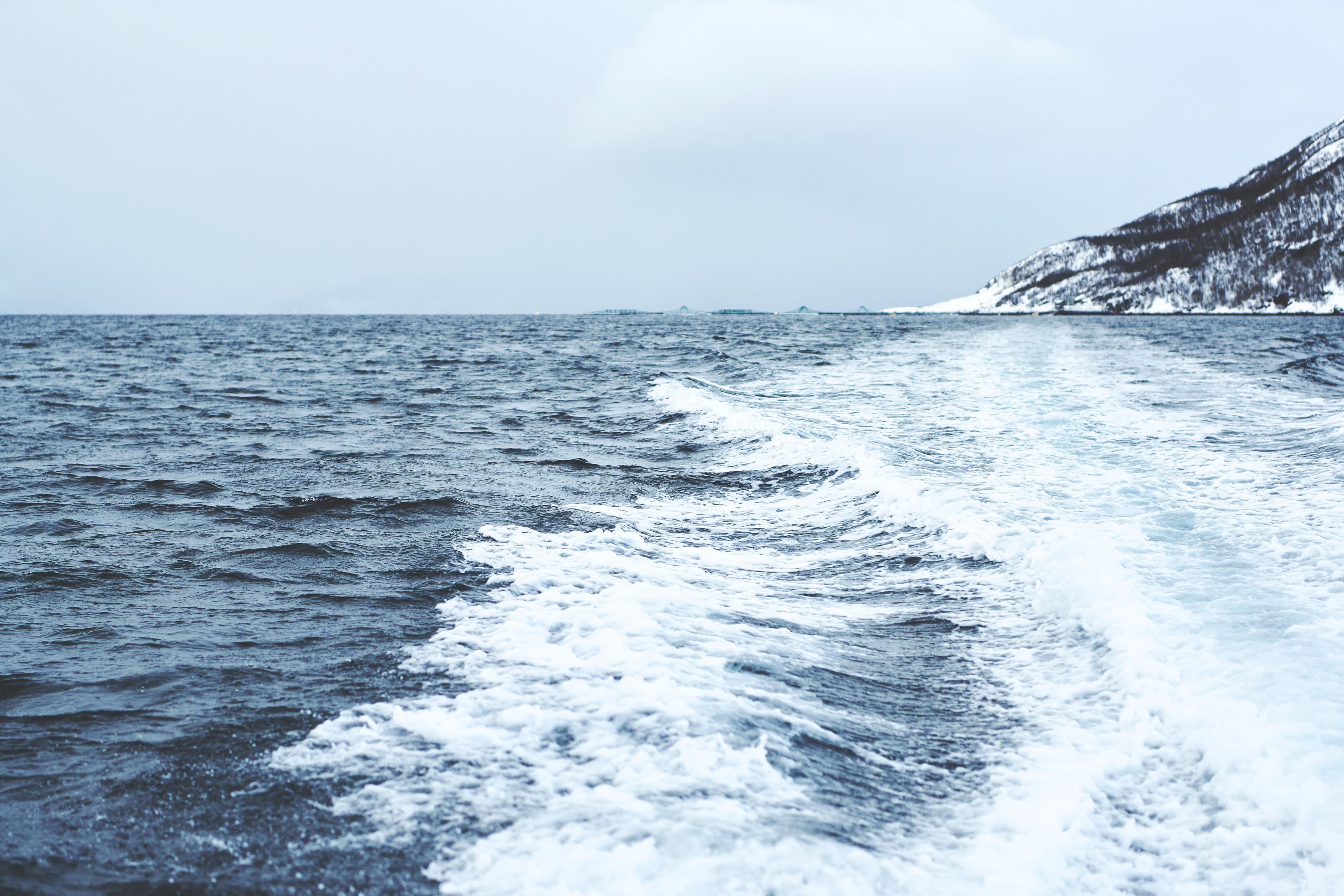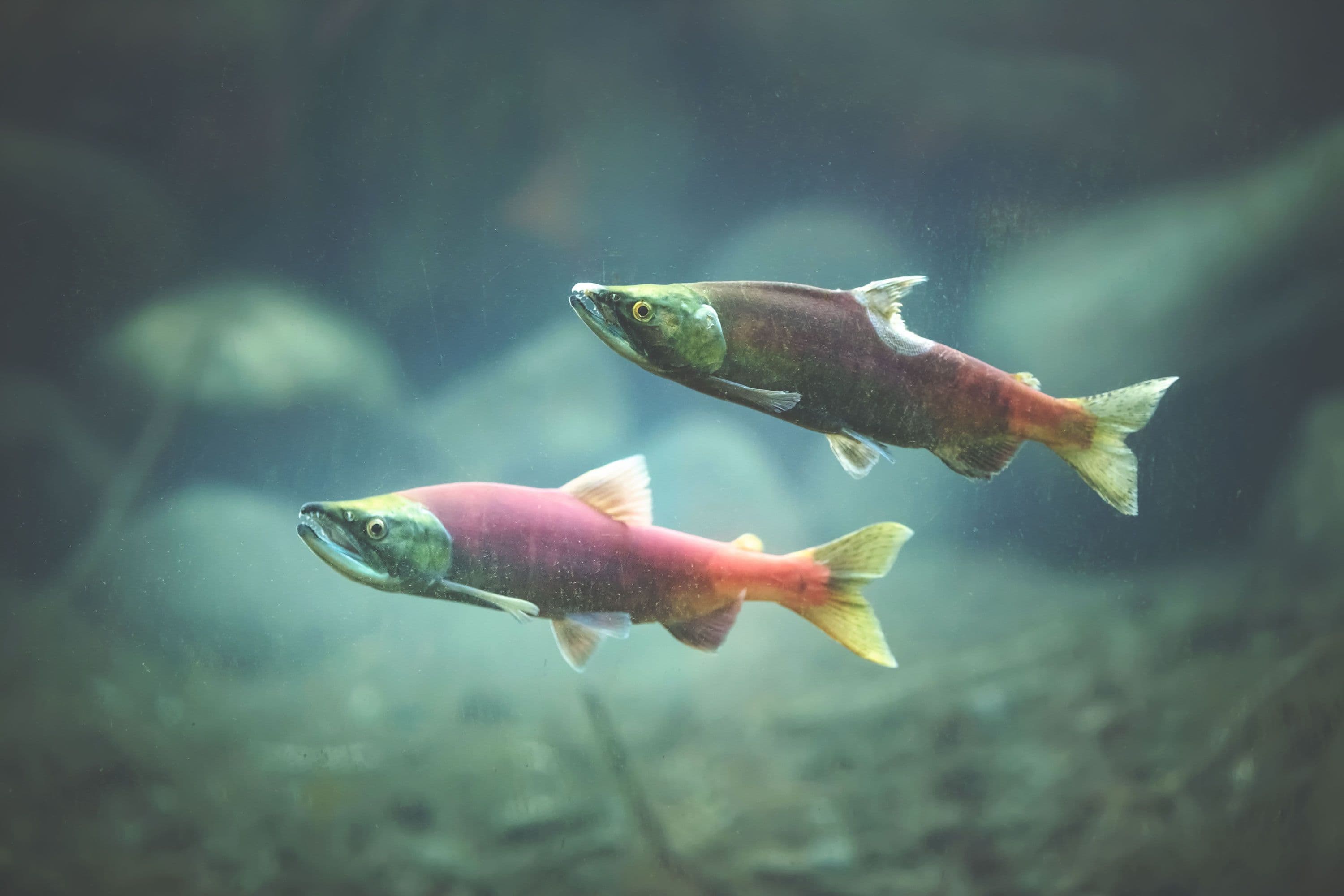
Organic emissions
Organic emissions from salmon farming may impact the marine ecosystem in the ocean under or around the pens. For this reason, we give the environment time to recover between each generation of fish farmed. Fish feces are a part of the natural ocean eco-system. When a shoal of fish enters an ocean area or a fjord system, fecal emissions from the fish occur naturally. Fish feces contain nutrients, and like manure from agricultural animals, they act as fertilizers for new life. In the ocean, these nutrients sustain the growth of small plankton, which may be eaten by bigger species and thereby move up the natural food chain.
However, too many nutrients in one area can cause eutrophication, which can potentially harm the existing fauna in an eco-system. While the feces of wild fish are widely distributed around the fjord system, salmon farms contain a lot of fish in a smaller area, and the risk of eutrophication increases. On the seabed beneath a farm, there will also be some temporary impact on the benthic fauna due to organic emissions.
Fallowing
When we fallow a farm, we leave it without fish for some time. When a farm is fallowed for a period, the seabed recovers and goes back to its original state.
To avoid eutrophication and a too large impact on the seabed, the release of organic emissions from open pen salmon farms is strictly monitored and regulated in all of the countries in which we operate. We monitor the seabed under and around our sea farms, and perform benthic testing during peak biomass.
Local regulations impose fallowing periods after each generation, to ensure the environment under and around the pen can recover.
- In Rogaland and Finnmark, regulations impose a fallowing period of at least two months. In Finnmark, due to colder temperatures and thus slower natural breakdowns of the organic material, we fallow for more than a year in some areas.
- In BC, the fallowing period is three months, although the seabed is usually healthy and restored straight after harvesting.
With Area Based Management, we fallow entire areas simultaneously, to let an entire fjord system rest and recover. If the local environment is not sufficiently restored after fallowing according to independent monitoring, we must extend the fallowing period before putting new fish into the pens or reduce the number of fish at the site concerned. As such, the regulatory system automatically reduces production to fit the local environment of each farm.
New technology may also help us reduce our footprint on nature. In some regions, we are now able to apply models of the fjord systems to understand how we can place the farm to ensure as little impact as possible. In some areas, moving the farm a few hundred meters or placing it with a different angle towards the currents, may reduce the organic impact significantly.
Selecting good farm locations
Key to ensure the lowest possible impact from our operations is to use sites that are well-suited for salmon farming. Before applying for a new site, we spend years collecting environmental data to understand whether that is the case for the particular site in question. We look for locations with deep waters and good currents, which exchange the water consecutively and disperse the feces into a wider area of the fjords, mitigating their negative impact. On good sites, we can farm more fish with better welfare and lower environmental impact. Often, we have to farm a few generations on a site before we understand the particular characteristics of that location and how much time is needed for fallowing.
In the past, technology was less developed and many farms were placed in areas with little water exchange. Grieg Seafood are working to phase out sites that are less optimal for salmon farming, and instead expanding production on well-suited farms. Altogether, this move allows us to farm with better fish welfare and lower organic impact, but also with better sea lice and disease control.
Reducing excess feed
Feed that is not eaten and that is released out of the pens may also impact the environment. We are working to reduce excess feeding by using underwater cameras, so that we can stop feeding when the fish are satisfied. We are also centralizing feeding operations from one or a few operation centers in each region, to develop specialized feeding expertise. Feed is the most expensive input into production, and precise feeding is both an ethical priority but also important to keep cost down.


